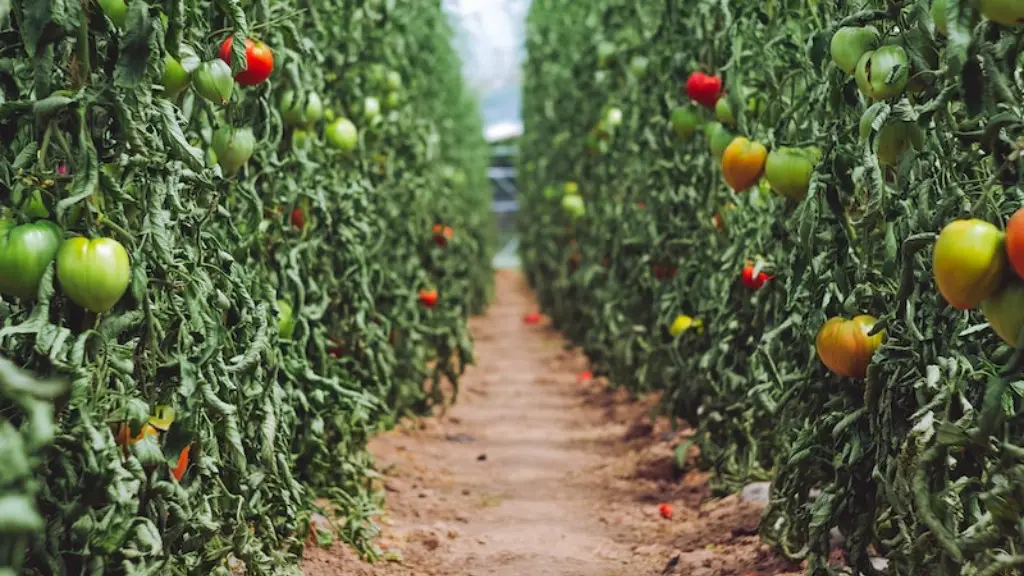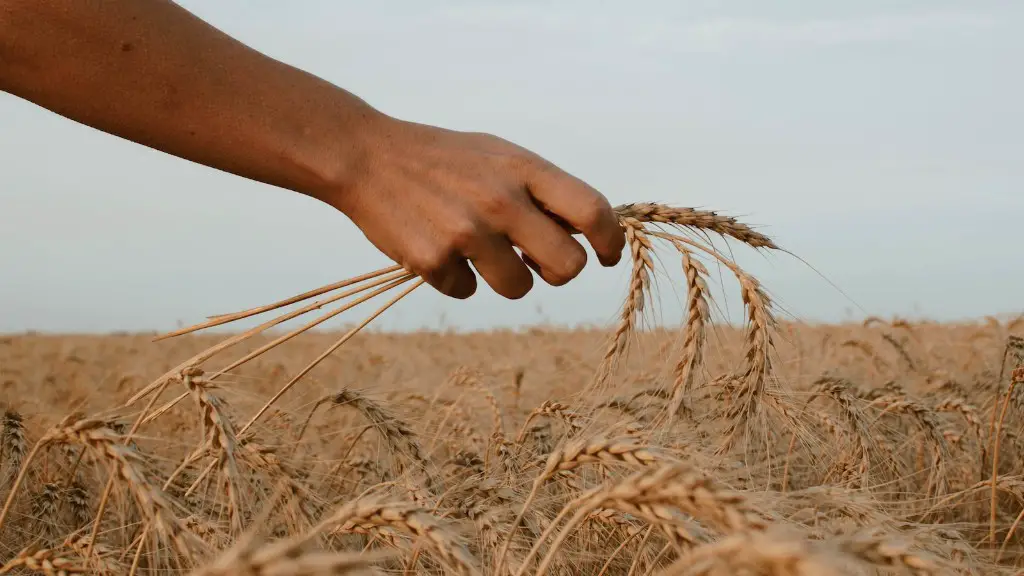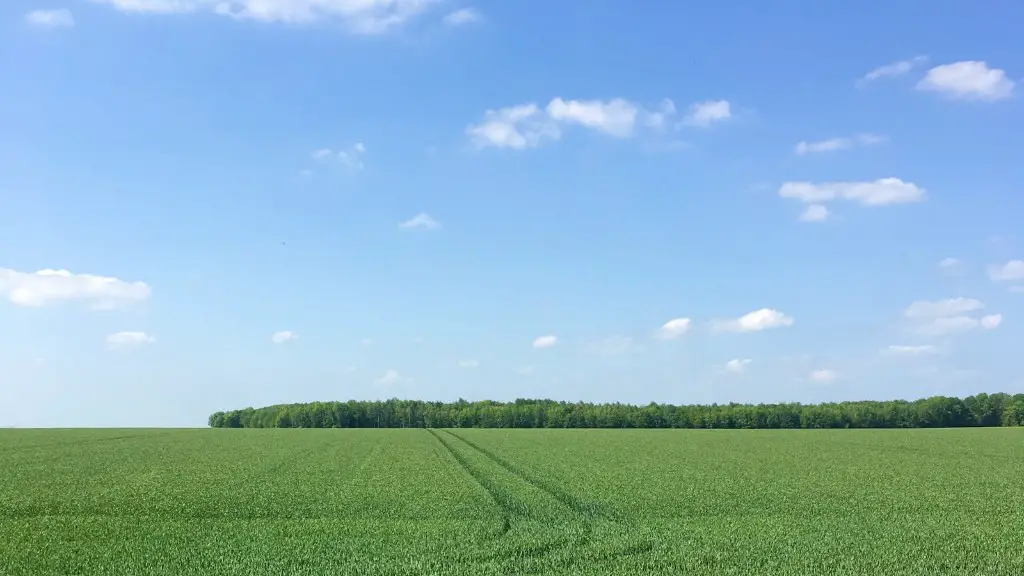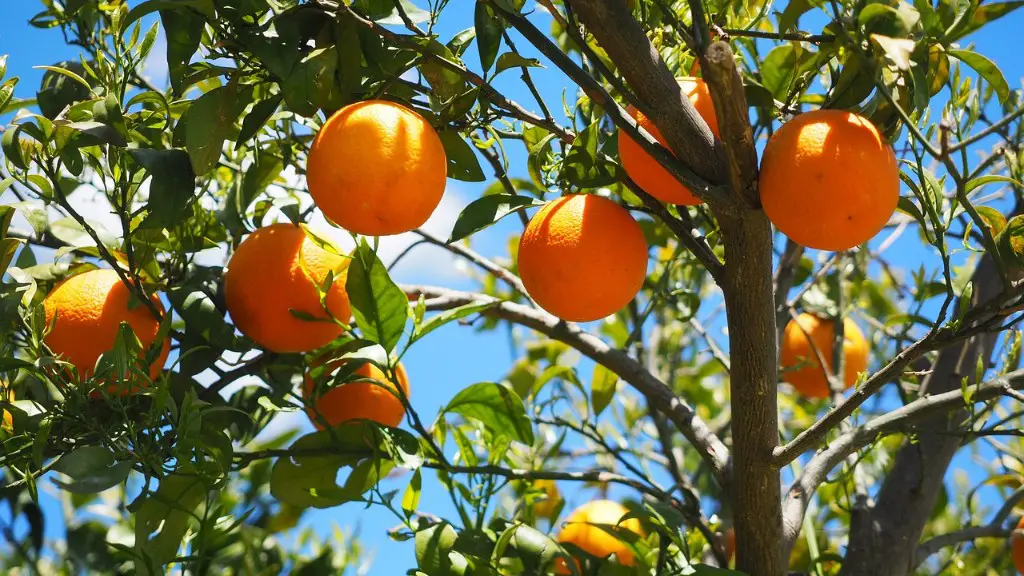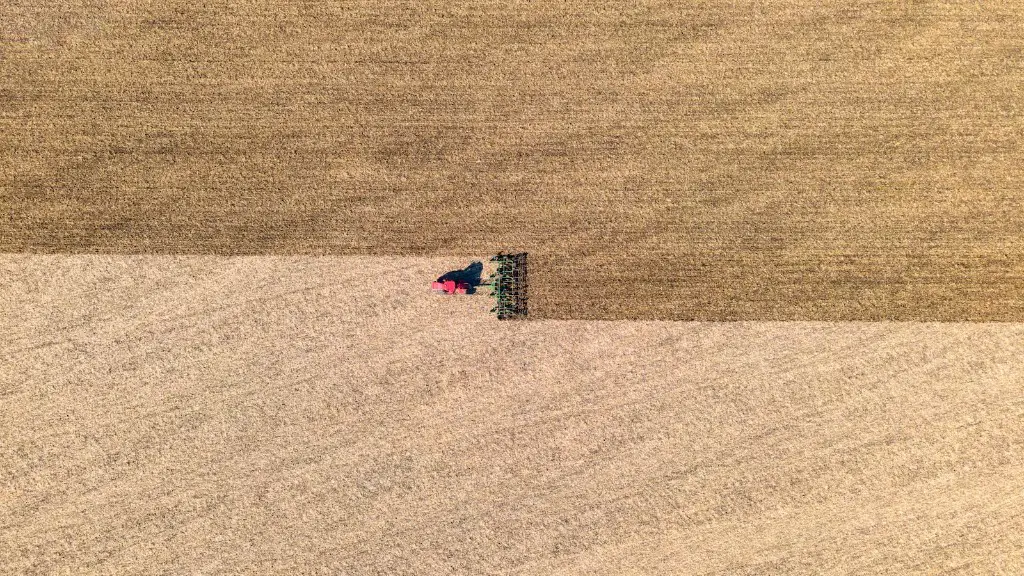Agriculture has been the bedrock of human civilization since the dawn of time. By definition, agriculture is a form of cultivation involving the planting, growing, and harvesting of certain plants for human usage. It does not necessarily involve large-scale tilling of soil and the herding of animals, though those activities are the more well-known aspects of agriculture. Instead, agriculture encompasses a wide variety of activities, such as crop and livestock production, agronomy, and other related practices. The cause of agriculture is widely debated, but there are a few key factors which are believed to have contributed to its rise.
One primary factor involved in the cause of agriculture is the transition from a nomadic lifestyle to a sedentary one. As humans began to settle in one specific area with a greater sense of permanence, they developed food and drink staples that they were able to cultivate in that region. This cultivation of food staples happened long before the invention of any farm machinery or even irrigation techniques. For example, we know that ancient hunter-gatherer societies grew crops such as corn, beans, and squash as early as 9000BC, long before any type of advanced farming equipment or techniques were invented.
Climate change, population growth, and the development of new farming technologies are also thought to have contributed to the cause of agriculture. Climate change is believed to have allowed for crops to be grown in more temperate climates, enabling humans to cultivate food over a larger area. Population growth, meanwhile, put pressure on early societies to produce more food in order to feed larger numbers of people. Technological advances, such as improved farming tools and irrigation systems, allowed for larger yields and enabled people to take advantage of different types of soil and land.
Finally, the emergence and spread of certain plants and animals, as well as the domestication of certain species, is another key factor in the cause of agriculture. The domestication of certain animals, such as cows, pigs, and chickens, allowed people to produce more quality food than they were able to with wild animals. The emergence of certain types of crops, such as wheat and barley, enabled humans to consume grains as part of their daily diet, providing them with the nutrition they needed to survive.
The cause of agriculture is, in fact, a complex one that has been debated by academics and experts for centuries. While there is no single definitive answer, the factors outlined above do provide a general understanding of how agriculture was likely born.
Technological Advancement And Farming
Technological advancements in agriculture have been one of the major catalysts for the cause of agriculture. Today, the use of modern, high-tech agricultural equipment such as tractors, combines and irrigation systems allow farmers to cultivate a wider range of crops and to produce larger yields with greater efficiency. Advances in biotechnology, such as genetic engineering, have also enabled scientists to develop new seed varieties that are more resistant to disease and more tolerant of extreme weather conditions. This has had a tremendous impact on the agricultural industry, as it has allowed for an increase in production and a wider range of produce.
The introduction of new farming methods and systems has also helped to improve the cultivation process. Through the use of rotation systems, farmers are able to reduce the risk of soil degradation, conserve water, and increase the diversity of crops they are able to cultivate. The introduction of organic farming has improved soil health, as opposed to traditional methods that rely heavily on chemical fertilizers. The use of greenhouses is also another example of how technology has made agricultural production more efficient, as they enable farmers to grow crops out of season and in controlled environments.
One additional example of how technological advancements have changed the face of farming is through the use of precision farming. Through the use of advanced technology such as sensors and cameras, farmers are now able to manage the soil and crops on an individual level, leading to an increase in the efficiency of crop production. This technology is particularly helpful when it comes to intensively planted crops, as precision farming has enabled farmers to increase yields without significantly impacting their resources.
These are just a few of the advances in technology that have had a positive impact on the cause of agriculture. As technology continues to progress, the impact it has had on the agricultural industry will only become more significant.
Marketing and Distribution of Agricultural Products
Marketing and distribution of agricultural products have also been key factors in the cause of agriculture. As the availability of food increased as a result of increased productivity and better farming techniques, so did the need for an efficient system to transport the produce from farm to market. This has been driven in part by advances in transportation technology such as railroads, improved roads, and the development of motorized vehicles.
Another major development has been in the field of produce storage. In the early days of farming, farmers would typically only store produce during its peak season, and anything that was left over would either be sold to traders or lost due to spoilage. However, as farmers began to grow crops on larger scales, they also developed methods to store their products so they could be distributed throughout the year. This has helped to reduce food waste and increase the availability of produce, in turn helping to spur the development of the agricultural industry.
Marketing and advertising has also become an integral part of the agricultural industry. Companies that offer farming-related services or products are now able to reach out to potential customers through a variety of media outlets, such as television, radio, magazines, and the internet. With the use of targeted advertising campaigns, farmers and other agricultural producers can capture the attention of potential customers, allowing them to increase the demand for their products, thus creating a larger and more politically powerful market for their produce.
The development of marketing and distribution networks for agricultural products is an important factor in the cause of agriculture, as it enables producers to reach larger markets and sell their products more effectively. This in turn leads to increased production, improved efficiency, and ultimately increased profits.
Government Intervention
The role that government has played in the development of agriculture is also an important factor in the cause of agriculture. Governments have long provided various forms of support to farmers and other agricultural producers, such as subsidies, tax incentives, and other forms of financial assistance. These types of incentives have helped to spur the growth of the agricultural industry, as they reduce the financial burden on farmers and make it easier for them to purchase equipment, materials, and other inputs. Additionally, governments have also developed various regulatory measures to ensure that producers are adhering to quality standards, such as food safety regulations, which help to protect the public from any potentially harmful food products.
In addition to providing farmers and other agricultural producers with assistance, governments also have a role in the marketing and distribution of agricultural products. Many governments have implemented marketing programs to promote the sale of certain types of produce and to create new markets for producers. For example, the Japanese government sponsors a program called “Grow It, Buy It” which encourages its citizens to purchase domestically produced fruits and vegetables.
In conclusion, it is clear that the development of agriculture has been the result of a combination of several factors. From the migration of early humans to climate change and technological advancement, the cause of agriculture is a complex one that has been debated by academics and experts for centuries. That being said, the factors outlined here do provide a general understanding of how this important industry has come to be.
Economic Impact of Agriculture
The economic impact of agriculture has been far-reaching. The sector contributes to GDP (Gross Domestic Product) in many countries and is the main source of employment and income in many rural communities around the world. Agricultural products are essential for not only providing food and nutrition for people, but also for providing raw materials for industry and creating a variety of jobs. The extent of the economic impact of agriculture is difficult to measure due to the many different aspects of the industry.
One of the main economic impacts of agriculture is employment. Farming is a labor-intensive industry and requires a great deal of manpower. It is estimated that the manufacturing, production, and marketing of agricultural products employ more than one billion people worldwide. In addition, a large percentage of global population relies on farming for their livelihoods. Thus, it is clear that the agricultural sector has a substantial economic impact in terms of job creation and income generation.
Agricultural products also provide important inputs for industrial production and economic growth. Crops, livestock, and other agricultural produce provide essential raw materials for a variety of industries such as textiles, food processing, and biofuels. Furthermore, agricultural exports are an important component of many developing countries’ economies, providing both foreign currency and a source of income for farmers. As a result, the economic impact of agriculture can be felt in almost all sectors of the economy.
In addition, agriculture has also had a major impact on the environment. Through sustainable agricultural practices, farmers are able to reduce their environmental impact while still improving crop yield and profits. These practices include soil conservation and the introduction of biological pest control techniques, which help to reduce the use of harmful chemicals and sustain the fertility of the soil. As a result, agriculture has become increasingly efficient, with higher yields and lower environmental costs.
Finally, the economic impact of agriculture is also seen in the rising global demand for food. In order to meet the increasing demand, farmers need to use resources more efficiently and, most importantly, adopt sustainable production methods. With increasing pressure on natural resources, environmentally-friendly and cost-effective agricultural methods have become essential for producing quality crops and producing them in large quantities.
Future of Agriculture
The future of agriculture looks bright and full of potential. As global population continues to grow, so too does the need for an efficient, sustainable, and profitable agricultural sector. In order to meet these demands, the industry must continue to invest in technological innovation, to continue to grow and thrive. By combining innovation and green technology, the industry can reduce both its environmental impact and its costs at the same time.
The widespread adoption of precision farming is one way that the agricultural industry can move forward. By using advanced sensors and satellite imaging, farmers are able to monitor their crops on a much more accurate level, while also reducing their environmental impact. This technology can be used to reduce the amount of water, energy, and chemicals used, while also boosting yields. In addition, precision farming can help farmers to identify and respond to pest and disease outbreaks quickly and efficiently, reducing the amount of crop damage and losses.
In addition to precision farming, the introduction of innovative agritech solutions has helped to reduce many of the labor-intensive tasks associated with farming. Automated systems and autonomous machines can take over many of the tedious tasks, such as spraying and weeding, allowing the farmer to focus on higher-value tasks such as marketing and production planning. This technology can also help reduce costs, increase efficiency, and improve quality control.
Finally, the industry must invest in climate-smart agriculture if it is to remain viable in the future. Climate-smart agriculture involves modifying agricultural practices to reduce the effects of climate change, such as extreme weather. By investing in irrigation and storage systems, for example, farmers can be better prepared for times of drought or flooding, thus reducing their risk and increasing their yields.
In conclusion, the future of agriculture looks promising, with a growing global population bringing with it an increased demand for food and the potential for innovative agritech solutions to the sector. By investing in new technologies, exploring climate-smart agricultural methods, and developing innovative marketing approaches, the agricultural industry can continue to thrive and remain economically and environmentally sustainable.
